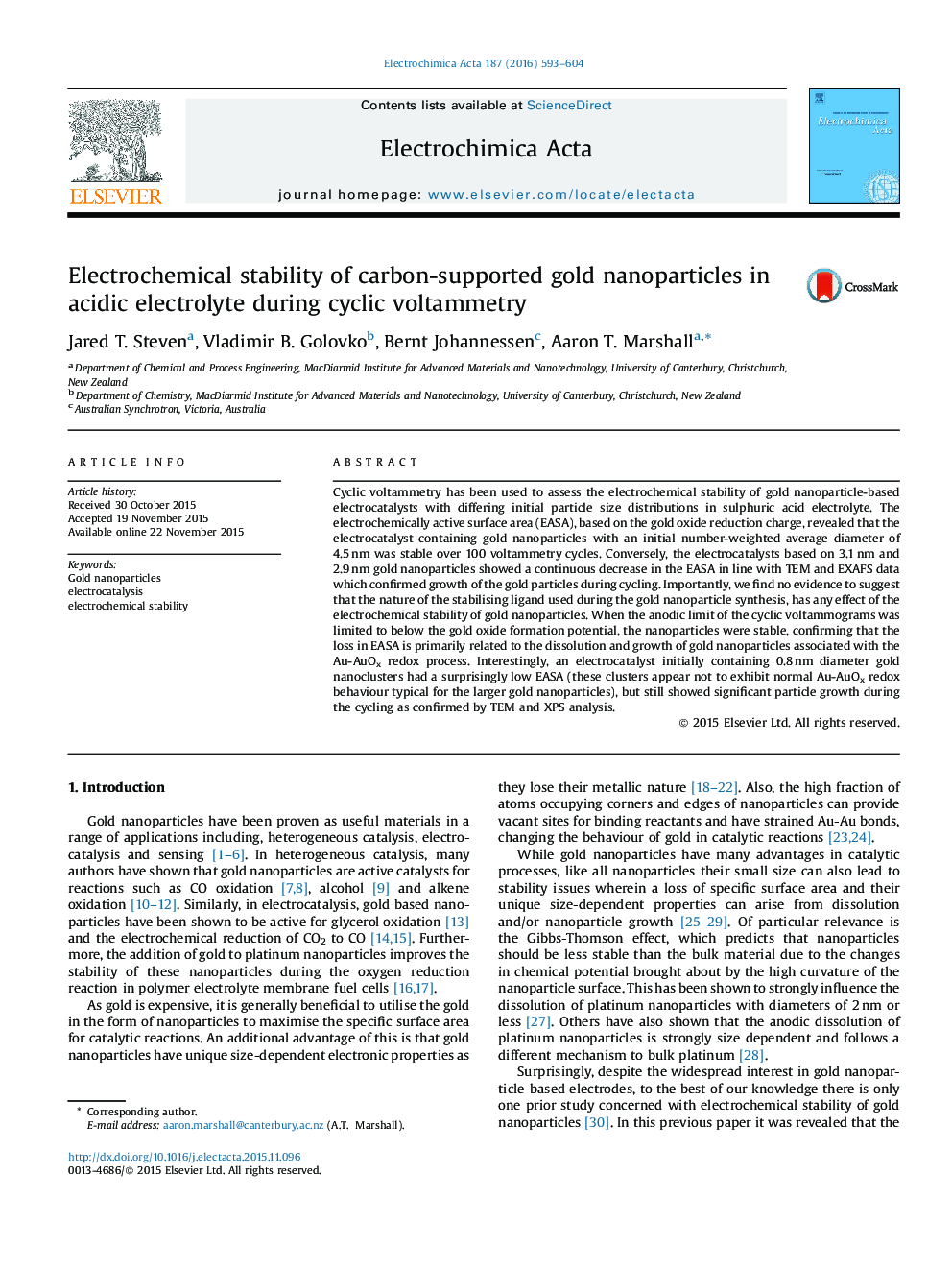| Article ID | Journal | Published Year | Pages | File Type |
|---|---|---|---|---|
| 183307 | Electrochimica Acta | 2016 | 12 Pages |
•The particle size distribution of Au NPs can change during cyclic voltammetry.•The electrochemical in-stability is caused by the Au-AuOx redox process.•Ligands do not prevent Au NP growth.
Cyclic voltammetry has been used to assess the electrochemical stability of gold nanoparticle-based electrocatalysts with differing initial particle size distributions in sulphuric acid electrolyte. The electrochemically active surface area (EASA), based on the gold oxide reduction charge, revealed that the electrocatalyst containing gold nanoparticles with an initial number-weighted average diameter of 4.5 nm was stable over 100 voltammetry cycles. Conversely, the electrocatalysts based on 3.1 nm and 2.9 nm gold nanoparticles showed a continuous decrease in the EASA in line with TEM and EXAFS data which confirmed growth of the gold particles during cycling. Importantly, we find no evidence to suggest that the nature of the stabilising ligand used during the gold nanoparticle synthesis, has any effect of the electrochemical stability of gold nanoparticles. When the anodic limit of the cyclic voltammograms was limited to below the gold oxide formation potential, the nanoparticles were stable, confirming that the loss in EASA is primarily related to the dissolution and growth of gold nanoparticles associated with the Au-AuOx redox process. Interestingly, an electrocatalyst initially containing 0.8 nm diameter gold nanoclusters had a surprisingly low EASA (these clusters appear not to exhibit normal Au-AuOx redox behaviour typical for the larger gold nanoparticles), but still showed significant particle growth during the cycling as confirmed by TEM and XPS analysis.
Graphical abstractFigure optionsDownload full-size imageDownload as PowerPoint slide
